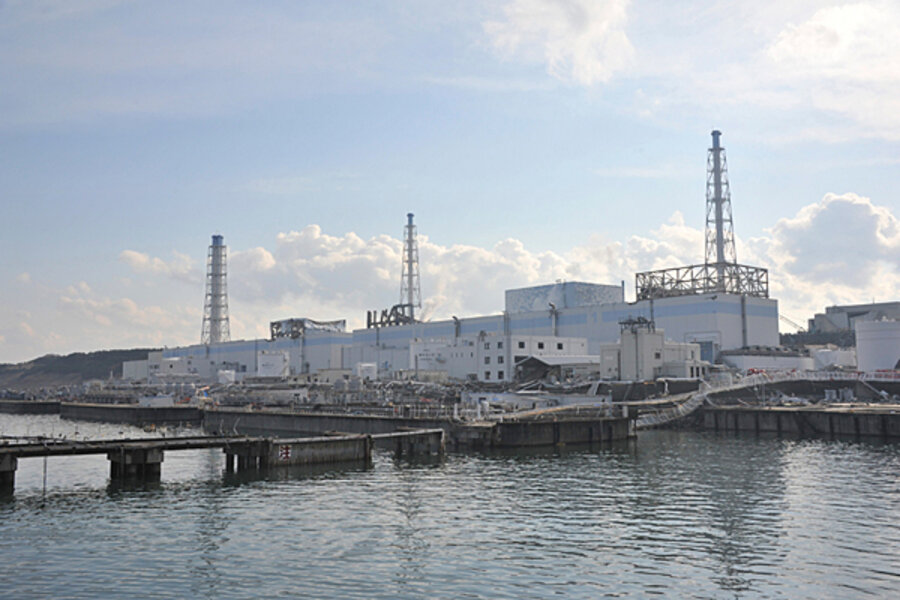Japan nuclear update: Where will they put the radioactive water?
Loading...
| Washington
Japanese authorities on Friday were struggling with a new problem at the devastated Fukushima Daiichi nuclear plant: where to put tons of radioactive water.
In recent days workers at Fukushima have discovered contaminated pools filling basements and maintenance tunnels beneath some of the damaged reactors. They’ve been sandbagging tunnel outlets and hooking up more pumps in an effort to prevent this water from reaching the ocean or filtering into groundwater.
But on Thursday International Atomic Energy Agency officials announced that earlier in the week workers had stopped pumping radioactive water from the basement of the Unit 1 reactor because the unit’s turbine condenser – the place they had been putting the water – was full.
Japan Fukushima nuclear crisis: A timeline of key events
Before being forced to stop workers had managed to pump out about half the radioactive water in the Unit 1 basement, according to Japan’s Nuclear and Industrial Safety Agency.
Turbine condensers at Units 2 and 3 were also full, Tokyo Electric Power Company (TEPCO) officials said. To try and open up more water storage space workers were beginning to pump water from these condensers into that serve most of Fukushima’s reactors.
IAEA: Situation still 'very serious'
The suppression pool surge tanks, which are used to empty the suppression pools designed to absorb excess energy in emergencies, can hold about 3400 tons of water. As of Thursday, they were about one-half to one-third full.
TEPCO was also studying how to pump water from a tunnel outside the turbine building to a large waste disposal facility on the Fukushima grounds. Workers were piling sandbags around the outlet of that tunnel to prevent overflow water from reaching the ocean, only a few hundred feet away.
As of Friday the overall situation at the Fukushima Daiichi complex remained “very serious,” according to the IAEA.
US Secretary of Energy Steven Chu, at a breakfast in Washington hosted by The Christian Science Monitor, said that data provided by Japan indicates that Reactor Units 1, 2, and 3 have all suffered partial meltdowns.
In the most significantly damaged of those reactors “as high as 70 percent of the core has been damaged,” said Chu.
Hoping for 'peace of mind'
However, Japan’s embattled Prime Minister Naoto Kan sounded an upbeat note at a press conference, vowing to do whatever it takes to regain control of the plant. TEPCO would pay damages to those whose lives and livelihoods have been directly impacted by the Fukushima crisis, he said.
“I promise to overcome this problem and regain a society where we can live with peace of mind,” said Kan.
Also on Friday the Japanese government ordered TEPCO to review its radiation figures, saying that some of them seem suspiciously high. In recent days TEPCO has had to retract some of its data, which has raised suspicions among many Japanese that the company may not be capable of dealing with the scope of the Fukushima nuclear accident.
Among measurements under review is a Thursday finding that showed groundwater under one reactor contained radioactive iodine at levels 10,000 times above what the Japanese government considers safe.





